News
Waymo kicks off initial tests in Japan with launch event
Waymo launches early tests in Japan, as Tesla and others look to roll out their own commercial robotaxi services.
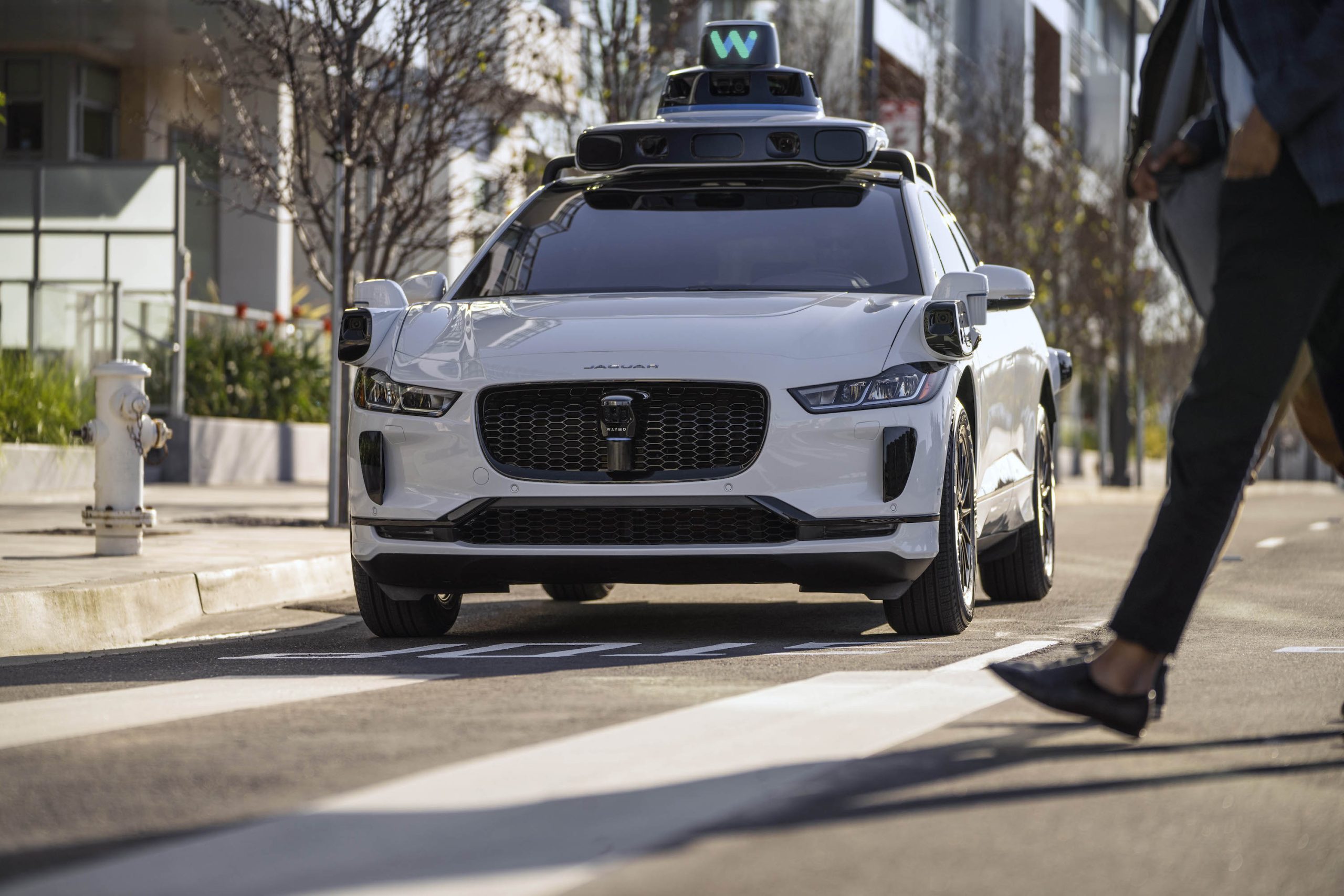
Commercial robotaxi company Waymo held a launch event in Japan last week, as the company prepares to enter early manual testing on its first international roads.
After Waymo shared plans to start testing vehicles in Japan in December, the Google-owned firm detailed the launch event in a press release on Monday. The event featured officials from project partners GO, a taxi platform, and Nihon Kotsu, the largest taxi company in Tokyo, along with featuring one of the company’s camera-, lidar-, and radar-outfitted Jaguar I-Pace units, expected to begin manual testing around Tokyo in the weeks to come.
Ichiro Kawanabe, Board Director at Nihon Kotsu and Chairman at both GO and the Japan Taxi Association, said that Waymo’s U.S. operations “demonstrated significant safety benefits,” along with thanking the company for hosting the event at the newly developed Takanawa Gateway City complex.
“I took my first ride with Waymo in Phoenix a year and a half ago and was amazed that there was really no one in the driver’s seat,” the chairman said. “That was the moment I was convinced that autonomous driving technology could absolutely benefit Japan. It will help ensure mobility service in the future of Japan, with the growing aging population and labor shortage.”
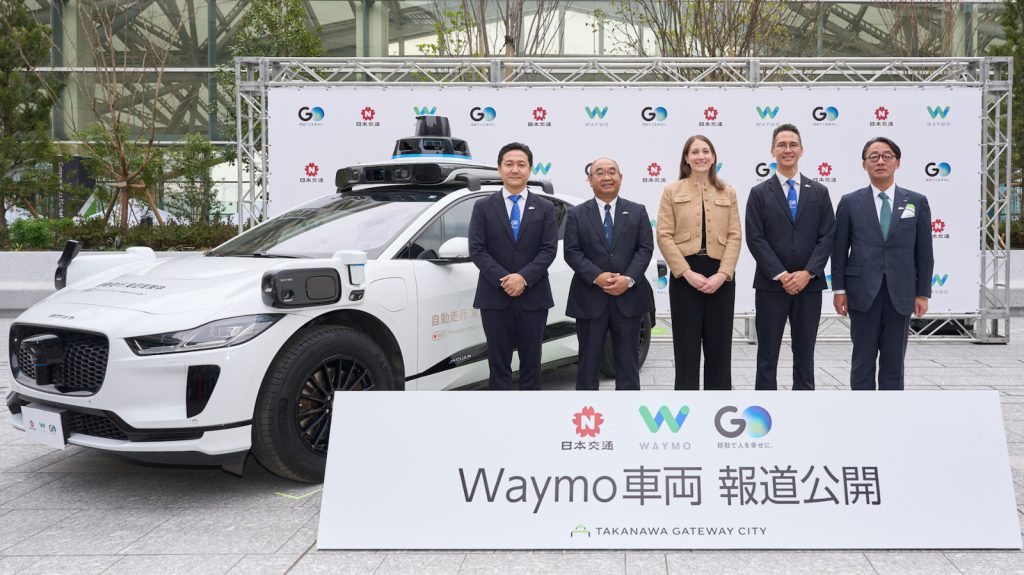
Credit: Waymo
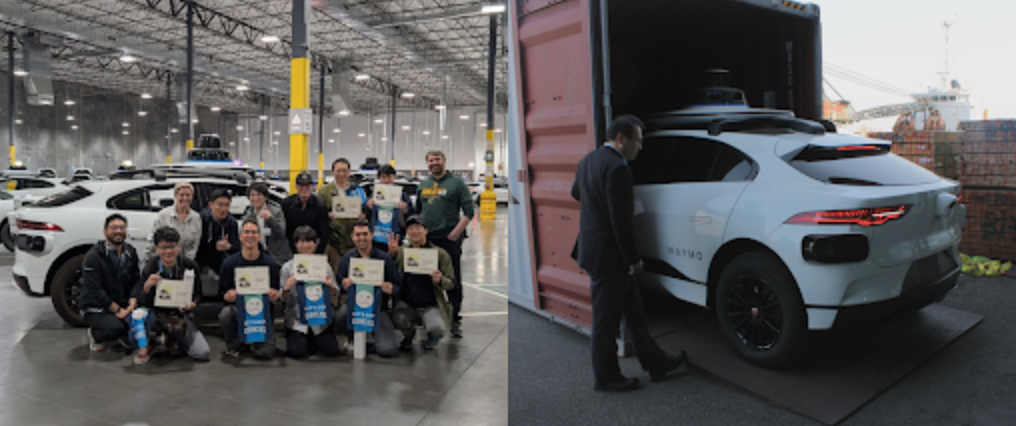
Credit: Waymo
This spring, Nihon Kotsu taxi operators will start driving Waymo vehicles across several Tokyo wards this spring, including Chiyoda, Chūō, Kōtō, Minato, Shibuya, Shinagawa, and Shinjuku. The tests will utilize 3D maps of the city, along with utilizing experienced drivers to generate data about traffic laws, patterns, and other road systems ahead of fully autonomous operation.
“After months of strong collaboration with Nihon Kotsu and GO, Waymo has reached a historic milestone— our first venture on international public roads,” said Nicole Gavel, Waymo Senior Director and Head of Business Development and Strategic Partnerships.
“Our partnership demonstrates how Waymo’s 15 years of operational expertise can adapt to new environments through strategic initiatives with industry leaders,” Gavel adds. “In Tokyo, we are abiding by the same steadfast principles that guide us in the U.S. — commitment to safety, dedication to earning trust in communities where we operate, and collaboration with local officials and community groups here in Tokyo.”
The news comes as Tesla, Amazon-owned firm Zoox, and still others are racing to enter the commercial robotaxi business throughout this year. It also comes amidst widespread speculation and debate about the emerging market, and as Tesla and Waymo both aim to begin operations internationally.
READ MORE ON WAYMO: Waymo study analyzes collisions with vulnerable road users
Tesla’s FSD in China, Mexico, commercial robotaxis still incoming
Waymo is already operating paid autonomous ride-hailing services around the U.S., and it said in December that it was giving more than 200,000 autonomous rides per week.
The company currently offers Waymo services in San Francisco and Los Angeles, California, Phoenix, Arizona, and, through a partnership with Uber, in Austin, Texas, where Tesla has a Gigafactory and plans to launch initial robotaxi services. The Alphabet-owned company is also aiming to launch services in Atlanta, Georgia and Miami, Florida this year, alongside its early tests in Tokyo.
Although Tesla doesn’t currently operate driverless ride-hailing in any capacity, individual owners in North America can purchase or subscribe to its Supervised Full Self-Driving (FSD) system, on which the company’s forthcoming robotaxi platform will be based. In October, the company unveiled the two-seat Cybercab vehicle, which has no steering wheel or pedals and will be used for the upcoming commercial robotaxi system.
Additionally, the company is aiming to launch its first unsupervised rides commercially in Austin in June, and it recently debuted Supervised FSD in China and Mexico, marking the company’s first international markets.
🎥: Our FULL first ride in the @Tesla Cybercab pic.twitter.com/6gR7OgKRCz
— TESLARATI (@Teslarati) October 11, 2024
Waymo vs. Tesla vs. the competition
While Tesla hasn’t quite gotten a commercial robotaxi service to market yet, Waymo, Amazon-owned company Zoox, and still many others have begun their own paid ride-hailing services or early tests. Meanwhile, Tesla’s approach to the technology is vastly different than that of Waymo and others, utilizing a camera-only, AI-trained neural network system, rather than 3D geomapping.
For one, the company can generate a larger pool of training data from real-time driving behavior of its individual owners, for instance as compared to Waymo’s use of a more-limited fleet of taxi drivers. Many argue that this, along with the cost-effectiveness of producing a system that’s built into every vehicle and utilizes only cameras, make the system more scalable than those of Waymo and others.
Still, some support the use of more than just camera systems and building in sensor redundancy as a way to maximize safety, especially as the technologies are still fairly new. Former Waymo CEO John Krafcik, who was a part of the company until 2021, criticized the FSD system in December for not including enough safety measures to support a realistic commercial robotaxi business, and he went on to call Tesla “a car company with a driver-assist system.”
“If a company were serious about building a safe and accessible robotaxi business, it would look nothing like what was shown,” Krafcik said during an interview. “The cost of a robust sensor set, including lidar, is trivial on a per-mile basis. Even more so for mapping. And the safety benefits measured in human harm reduction are real and verifiable.”
Waymo valued at over $45 billion following latest financing round: report

News
Tesla removes Safety Monitors, begins fully autonomous Robotaxi testing
This development, in terms of the Robotaxi program, is massive. Tesla has been working incredibly hard to expand its fleet of Robotaxi vehicles to accommodate the considerable demand it has experienced for the platform.
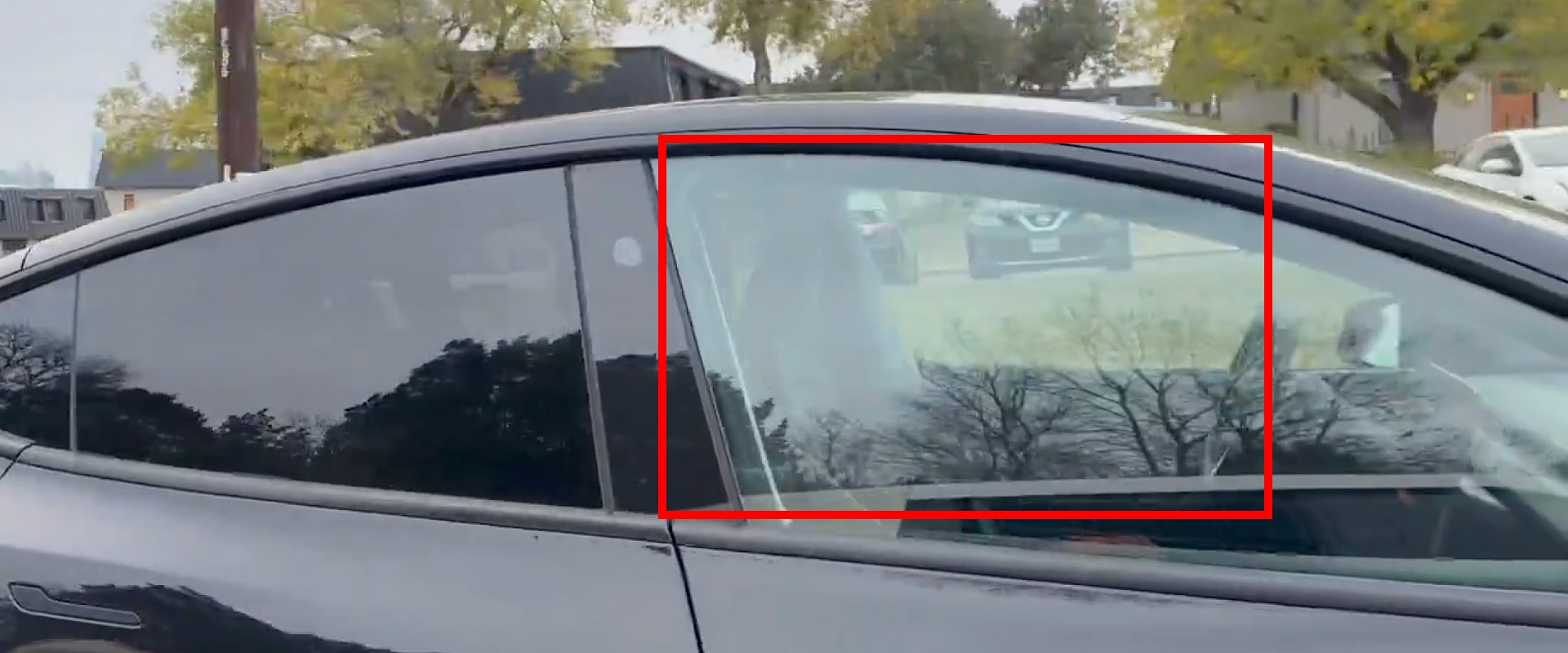
Tesla has started Robotaxi testing in Austin, Texas, without any vehicle occupants, the company’s CEO Elon Musk confirmed on Sunday. Two Tesla Model Y Robotaxi units were spotted in Austin traveling on public roads with nobody in the car.
The testing phase begins just a week after Musk confirmed that Tesla would be removing Safety Monitors from its vehicles “within the next three weeks.” Tesla has been working to initiate driverless rides by the end of the year since the Robotaxi fleet was launched back in June.
Two units were spotted, with the first being seen from the side and clearly showing no human beings inside the cabin of the Model Y Robotaxi:
A Tesla without a driver was spotted traveling on public roads! pic.twitter.com/ZLbduf4cKa
— TESLARATI (@Teslarati) December 14, 2025
Another unit, which is the same color but was confirmed as a different vehicle, was spotted just a few moments later:
NEWS: A second Tesla Model Y Robotaxi running FSD Unsupervised has just been spotted driving itself on public roads in Austin, Texas, with no one in the front seats.
This is a different car from the one spotted earlier. They have different license plates.
h/t @Mandablorian https://t.co/5URYsUGyD0 pic.twitter.com/CIUi4mXi33
— Sawyer Merritt (@SawyerMerritt) December 14, 2025
The two units are traveling in the general vicinity of the South Congress and Dawson neighborhoods of downtown Austin. These are located on the southside of the city.
This development, in terms of the Robotaxi program, is massive. Tesla has been working incredibly hard to expand its fleet of Robotaxi vehicles to accommodate the considerable demand it has experienced for the platform.
However, the main focus of the Robotaxi program since its launch in the Summer was to remove Safety Monitors and initiate completely driverless rides. This effort is close to becoming a reality, and the efforts of the company are coming to fruition.
Testing is underway with no occupants in the car
— Elon Musk (@elonmusk) December 14, 2025
It is a drastic step in the company’s trek for self-driving technology, as it plans to expand it to passenger vehicles in the coming years. Tesla owners have plenty of experience with the Full Self-Driving suite, which is not fully autonomous, but is consistently ranked among the best-performing platforms in the world.
News
Tesla refines Full Self-Driving, latest update impresses where it last came up short
We were able to go out and test it pretty extensively on Saturday, and the changes Tesla made from the previous version were incredibly impressive, especially considering it seemed to excel where it last came up short.
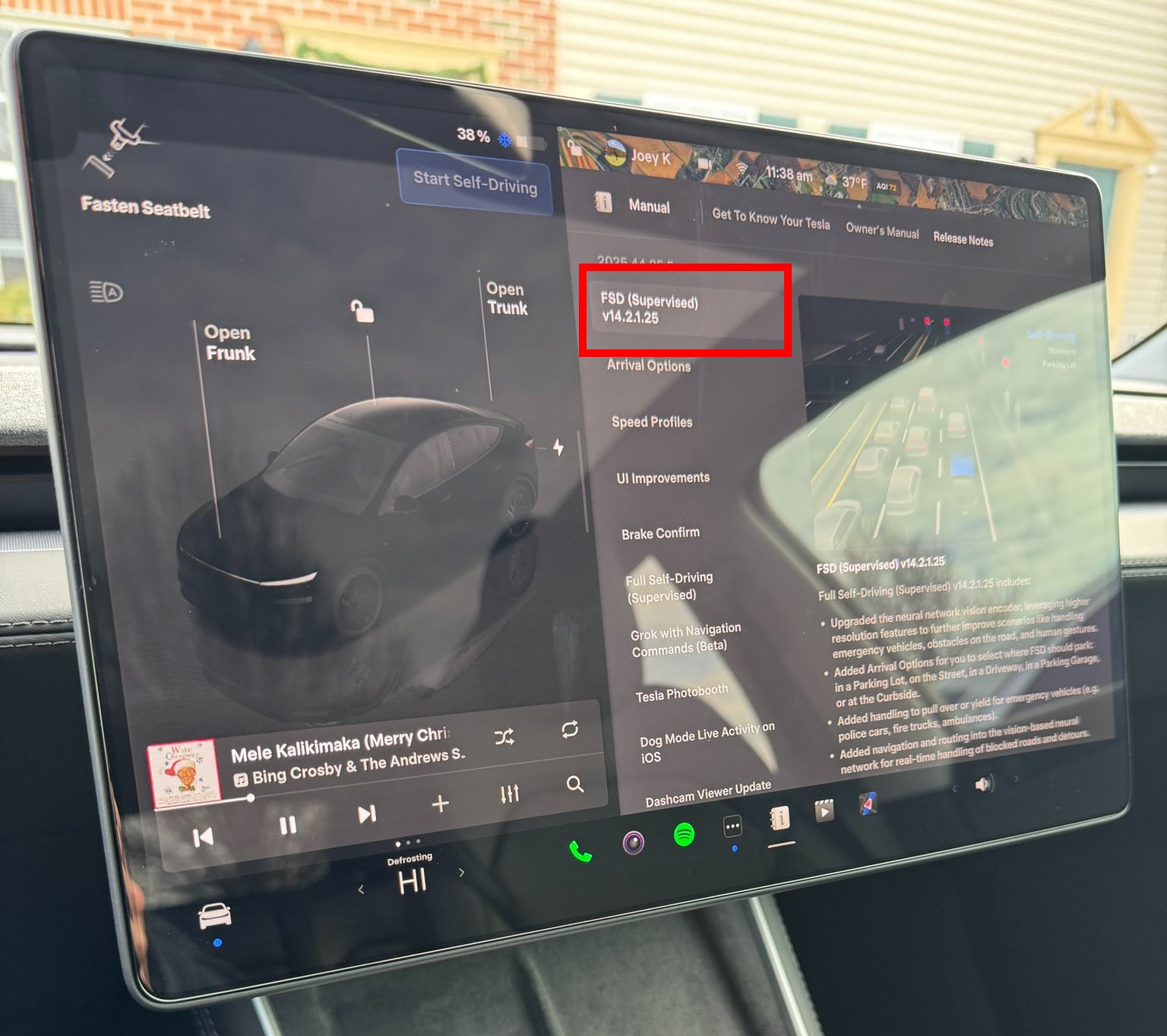
Tesla released Full Self-Driving v14.2.1.25 on Friday night to Early Access Program (EAP) members. It came as a surprise, as it was paired with the release of the Holiday Update.
We were able to go out and test it pretty extensively on Saturday, and the changes Tesla made from the previous version were incredibly impressive, especially considering it seemed to excel where it last came up short.
Tesla supplements Holiday Update by sneaking in new Full Self-Driving version
With Tesla Full Self-Driving v14.2.1, there were some serious regressions. Speed Profiles were overtinkered with, causing some modes to behave in a strange manner. Hurry Mode was the most evident, as it refused to go more than 10 MPH over the speed limit on freeways.
It would routinely hold up traffic at this speed, and flipping it into Mad Max mode was sort of over the top. Hurry is what I use most frequently, and it had become somewhat unusable with v14.2.1.
It seemed as if Speed Profiles should be more associated with both passing and lane-changing frequency. Capping speeds does not help as it can impede the flow of traffic. When FSD travels at the speed of other traffic, it is much more effective and less disruptive.
With v14.2.1.25, there were three noticeable changes that improved its performance significantly: Speed Profile refinements, lane change confidence, and Speed Limit recognition.
🚨 Many of you asked us to test highway driving with Tesla Full Self-Driving v14.2.1.25. Here’s what we noticed:
✅ Speed Profiles are significantly improved. Hurry Mode is no longer capped at 10 MPH over the speed limit, and now travels with the flow of traffic. This is much… pic.twitter.com/48ZCGbW0JO
— TESLARATI (@Teslarati) December 13, 2025
Speed Profile Refinement
Speed Profiles have been significantly improved. Hurry Mode is no longer capped at 10 MPH over the speed limit and now travels with the flow of traffic. This is much more comfortable during highway operation, and I was not required to intervene at any point.
With v14.2.1, I was sometimes assisting it with lane changes, and felt it was in the wrong place at the wrong time more frequently than ever before.
However, this was one of the best-performing FSD versions in recent memory, and I really did not have any complaints on the highway. Speed, maneuvering, lane switching, routing, and aggressiveness were all perfect.
Lane Changes
v14.2.1 had a tendency to be a little more timid when changing lanes, which was sort of frustrating at times. When the car decides to change lanes and turn on its signal, it needs to pull the trigger and change lanes.
It also changed lanes at extremely unnecessary times, which was a real frustration.
There were no issues today on v14.2.1.25; lane changes were super confident, executed at the correct time, and in the correct fashion. It made good decisions on when to get into the right lane when proceeding toward its exit.
It was one of the first times in a while that I did not feel as if I needed to nudge it to change lanes. I was very impressed.
Speed Limit Recognition
So, this is a complex issue. With v14.2.1, there were many times when it would see a Speed Limit sign that was not meant for the car (one catered for tractor trailers, for example) or even a route sign, and it would incorrectly adjust the speed. It did this on the highway several times, mistaking a Route 30 sign for a 30 MPH sign, then beginning to decelerate from 55 MPH to 30 MPH on the highway.
This required an intervention. I also had an issue leaving a drive-thru Christmas lights display, where the owners of the private property had a 15 MPH sign posted nearly every 200 yards for about a mile and a half.
The car identified it as a 55 MPH sign and sped up significantly. This caused an intervention, and I had to drive manually.
It seems like FSD v14.2.1.25 is now less reliant on the signage (maybe because it was incorrectly labeling it) and more reliant on map data or the behavior of nearby traffic.
A good example was on the highway today: despite the car reading that Route 30 sign and the Speed Limit sign on the center screen reading 30 MPH, the car did not decelerate. It continued at the same speed, but I’m not sure if that’s because of traffic or map data:
🚨 We listened to and read a lot of you who had a complaint of Tesla Full Self-Driving v14.2.1 incorrectly reading Speed Limit signs
This appears to be resolved in v14.2.1.25.
Here’s a breakdown: pic.twitter.com/TEP03xrMbt
— TESLARATI (@Teslarati) December 13, 2025
A Lone Complaint
Tesla has said future updates will include parking improvements, and I’m really anxious for them, because parking is not great. I’ve had some real issues with it over the past couple of months.
Today was no different:
🚨 My lone complaint with my drive on Tesla FSD v14.2.1.25 was this strange parking instance.
FSD swung out wide to the left to pull into this spot and this is where it seemed to be stumped. I gave it about 10 seconds after the car just stopped moving for it to make some… https://t.co/ZEkhTHOihG pic.twitter.com/TRemXu5DLf
— TESLARATI (@Teslarati) December 13, 2025
Full Self-Driving v14.2.1.25 is really a massive improvement over past versions, and it seems apparent that Tesla took its time with fixing the bugs, especially with highway operation on v14.2.1.
News
Tesla hints at Starlink integration with recent patent
“By employing polymer blends, some examples enable RF transmission from all the modules to satellites and other communication devices both inside and outside the vehicle.”

Tesla hinted at a potential Starlink internet terminal integration within its vehicles in a recent patent, which describes a vehicle roof assembly with integrated radio frequency (RF) transparency.
The patent, which is Pub. No U.S. 2025/0368267 describes a new vehicle roof that is made of RF-transparent polymer materials, allowing and “facilitating clear communication with external devices and satellites.”
Tesla believes that a new vehicle roof design, comprised of different materials than the standard metallic or glass elements used in cars today, would allow the company to integrate modern vehicular technologies, “particularly those requiring radio frequency transmission and reception.
Tesla has recently filed a US patent application on integrating RF transparent materials into the roof structure.
“facilitating clear communication with external devices and satellites”
Tesla fleet is getting @Starlink connectivity integration soon. LFG @Tesla @elonmusk… pic.twitter.com/bLa8YtPLd1
— Chansoo Byeon (@Chansoo) December 9, 2025
Instead of glass or metallic materials, Tesla says vehicles may benefit from high-strength polymer blends, such as Polycarbonate, Acrylonitrile Butadiene Styrene, or Acrylonitrile Styrene Acrylate.
These materials still provide ideal strength metrics for crashworthiness, stiffness for noise, vibration, and harshness control, and are compliant with head impact regulations.
They would also enable better performance with modern technologies, like internet terminals, which need an uninterrupted signal to satellites for maximum reception. Tesla writes in the patent:
“By employing polymer blends, some examples enable RF transmission from all the modules to satellites and other communication devices both inside and outside the vehicle.”

One of the challenges Tesla seems to be aware of with this type of roof design is the fact that it will still have to enable safety and keep that at the forefront of the design. As you can see in the illustration above, Tesla plans to use four layers to increase safety and rigidity, while also combating noise and vibration.
It notes in the patent that disclosed examples still meet the safety requirements outlined in the Federal Motor Vehicle Safety Standards (FMVSS).
Starlink integrated directly into Tesla vehicles would be a considerable advantage for owners. It would come with a handful of distinct advantages.
Initially, the inclusion of Starlink would completely eliminate cellular dead zones, something that is an issue, especially in rural areas. Starlink would provide connectivity in these remote regions and would ensure uninterrupted service during road trips and off-grid adventures.
It could also be a critical addition for Robotaxi, as it is crucial to have solid and reliable connectivity for remote monitoring and fleet management.
Starlink’s growing constellation, thanks to SpaceX’s routine and frequent launch schedule, will provide secure, stable, and reliable internet connectivity for Tesla vehicles.
Although many owners have already mounted Starlink Mini dishes under their glass roofs for a similar experience, it may be integrated directly into Teslas in the coming years, either as an upgrade or a standard feature.








